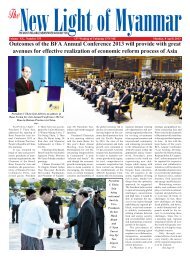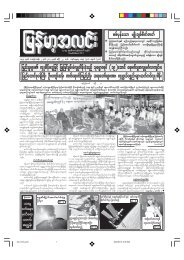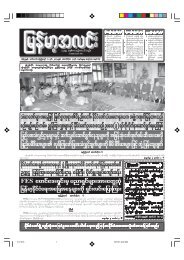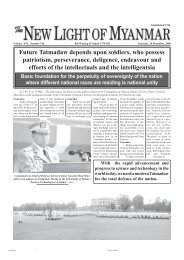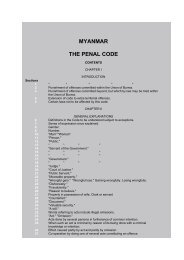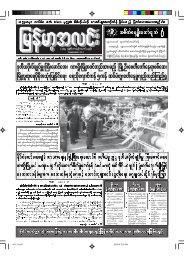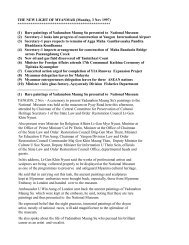Changing Buddhist Practice in Burma - Online Burma Library
Changing Buddhist Practice in Burma - Online Burma Library
Changing Buddhist Practice in Burma - Online Burma Library
Create successful ePaper yourself
Turn your PDF publications into a flip-book with our unique Google optimized e-Paper software.
way, vispassana strives for non-self. The experiences (of body and m<strong>in</strong>d) are<br />
chang<strong>in</strong>g accord<strong>in</strong>g to the law of impermanence. Mahasi wrote, "one who<br />
desires to practice 'Vispassana' should retire to a quiet place and seat himself<br />
cross-legged or <strong>in</strong> any convenient manner so as to enable him to sit for a long<br />
time, with body erect, and then contemplate by fix<strong>in</strong>g his attention on the<br />
physical and mental phenomena which are known as 'Upadanakkhandhas' and<br />
which are dist<strong>in</strong>ctly aris<strong>in</strong>g <strong>in</strong> his body". The five comb<strong>in</strong>ed physical and<br />
mental groups of the Upadanakkhandhas, "are those which are dist<strong>in</strong>ctly<br />
perceived at every moment of see<strong>in</strong>g hear<strong>in</strong>g, smell<strong>in</strong>g, know<strong>in</strong>g the taste,<br />
feel<strong>in</strong>g the bodily-contacts and th<strong>in</strong>k<strong>in</strong>g of ideas, etc" (Mahasi Sayadaw 1958:<br />
6). 23<br />
Mahasi Vipassana beg<strong>in</strong>s with two prescribed meditation techniques; abdomen<br />
meditation for the beg<strong>in</strong>ner, and breath<strong>in</strong>g meditation for the advanced<br />
practitioner (Mahasi Sayadaw 1984: 3-13, 14- 41). 24 Abdomen meditation is<br />
practiced by observ<strong>in</strong>g, know<strong>in</strong>g, and focus<strong>in</strong>g the consciousness on every<br />
movement of the abdomen caused by breath<strong>in</strong>g; for example particular<br />
attention can be given to the actual movement of the abdomen, 'ris<strong>in</strong>g' and<br />
'fall<strong>in</strong>g' (Mahasi Sayadaw 1958: 7, 1984: 3- 13). Breath<strong>in</strong>g technique <strong>in</strong>volves<br />
be<strong>in</strong>g aware and know<strong>in</strong>g when the meditator breathes air <strong>in</strong> and out through<br />
the nose. Both these techniques <strong>in</strong>volve specific bodily postures such as<br />
keep<strong>in</strong>g the body upright (straight back) when sitt<strong>in</strong>g, although the meditator<br />
can sit on a chair and the posture can be varied to a comfortable position as<br />
meditation is meant to be a relaxed practice. However, every bodily movement<br />
16







